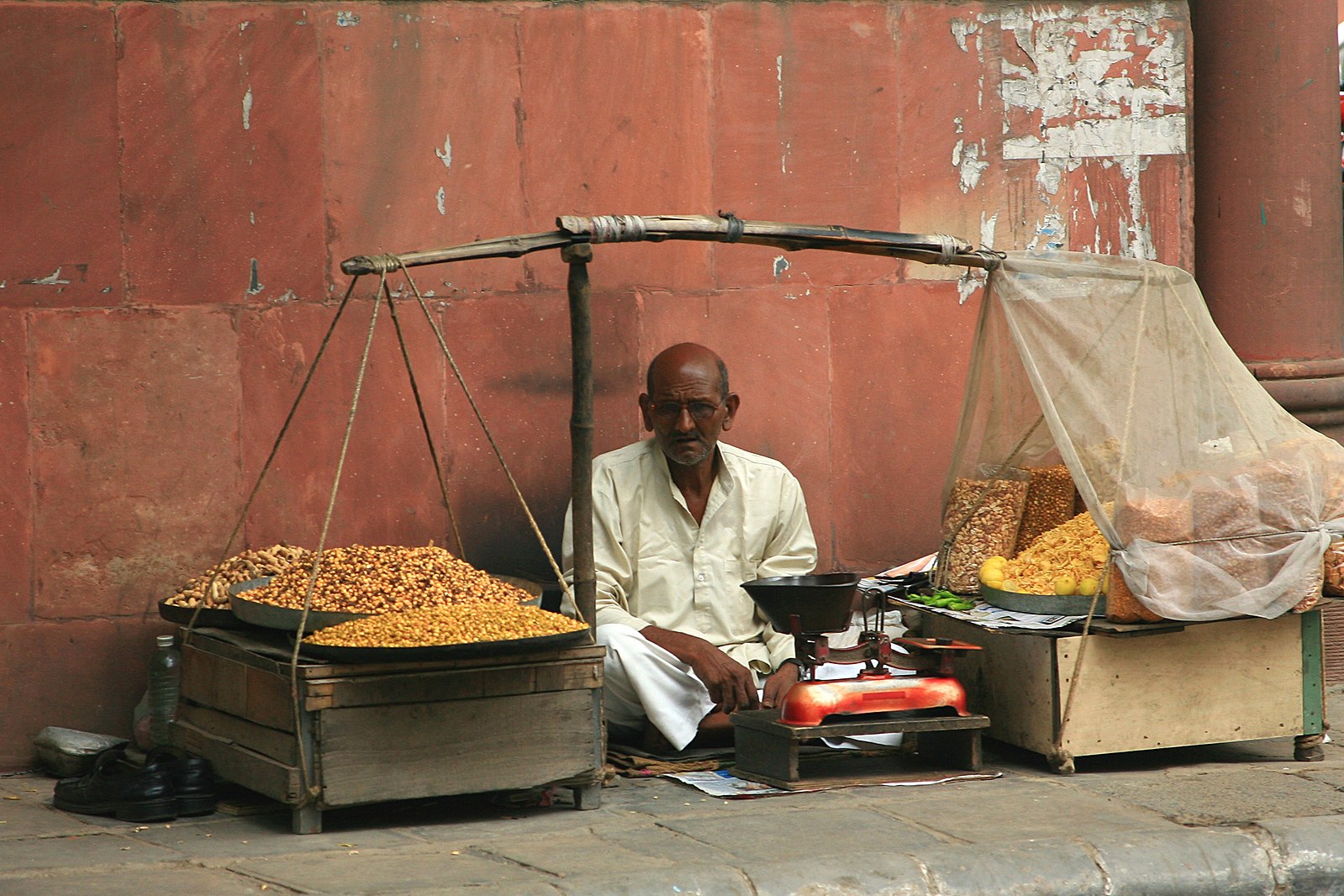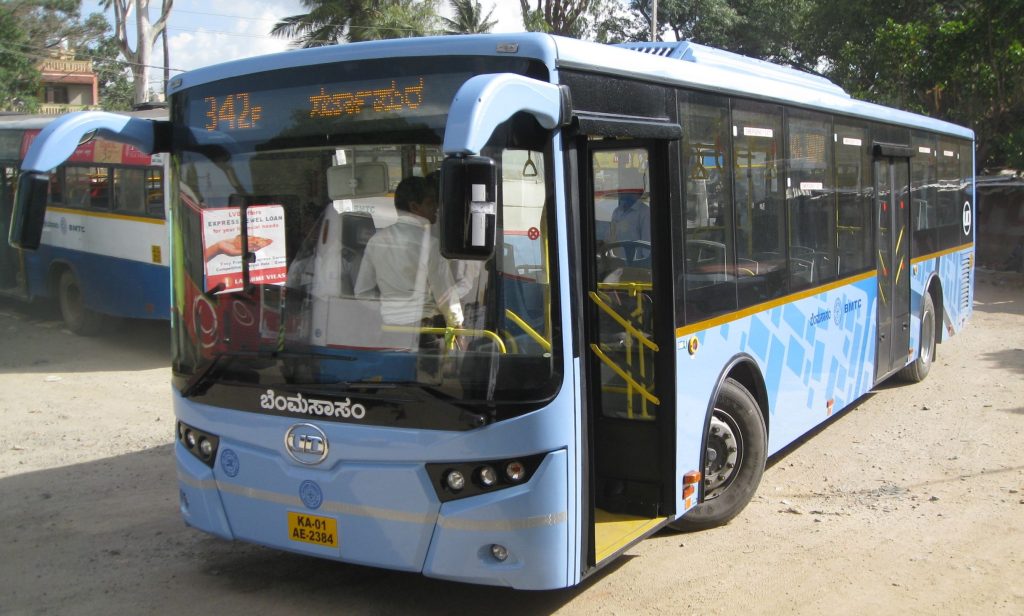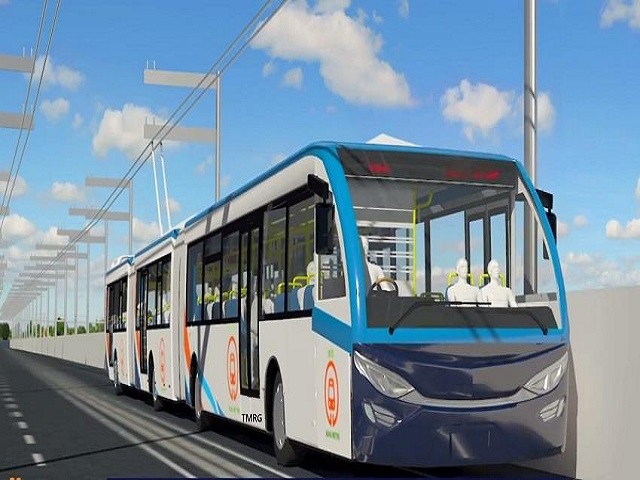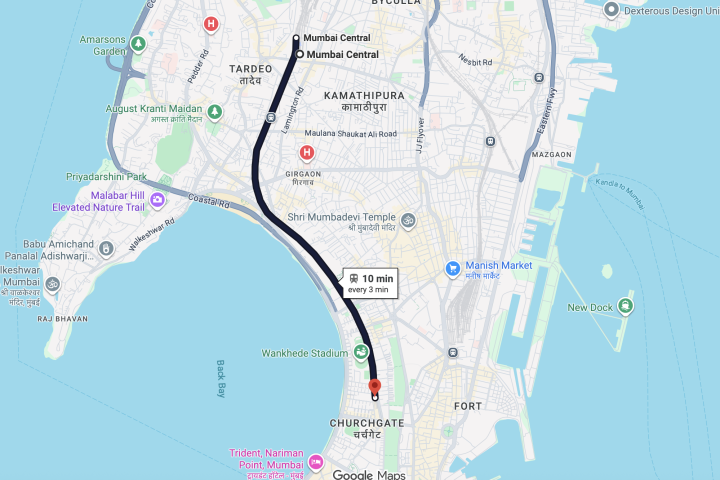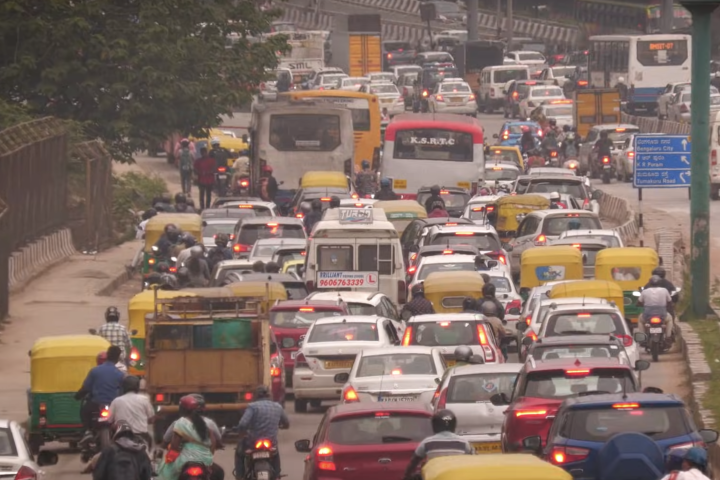Our cities have one of the worst walkability index in the world. Footpaths are either missing, broken or dug up. Over the years, walking has decreased in India due to the rise in private vehicles and the lack of safe, continuous footpaths.
The country has been spending billions of dollars on infrastructure projects in recent years, yet the condition of footpaths has barely improved. This is because funds are often allocated to big-ticket projects like bridges, highways, tunnels, and flyovers.
In places where they exist, they are often shared by hawkers, encroaching shops, animals, trees, poles, transformers, parked vehicles etc. This leaves pedestrians fighting for space to walk, and this tussle often results in pedestrians being pushed out on the road.
Street vendors are often blamed for the struggles of pedestrians, labeled as illegal and accused of encroachment. The outrage by pedestrians is not misplaced though. According to recent statistics, most accident victims in India are in fact pedestrians.
This leaves us with a precarious situation of dealing with street vendors. The informal sector plays a vital role in the economy, driven by micro-entrepreneurs who generate employment, boost local markets, and support social inclusion.
The National Academy of Agricultural Research Management, Hyderabad gathered data on street vendors in its report, and as you can find below the number is significantly large.
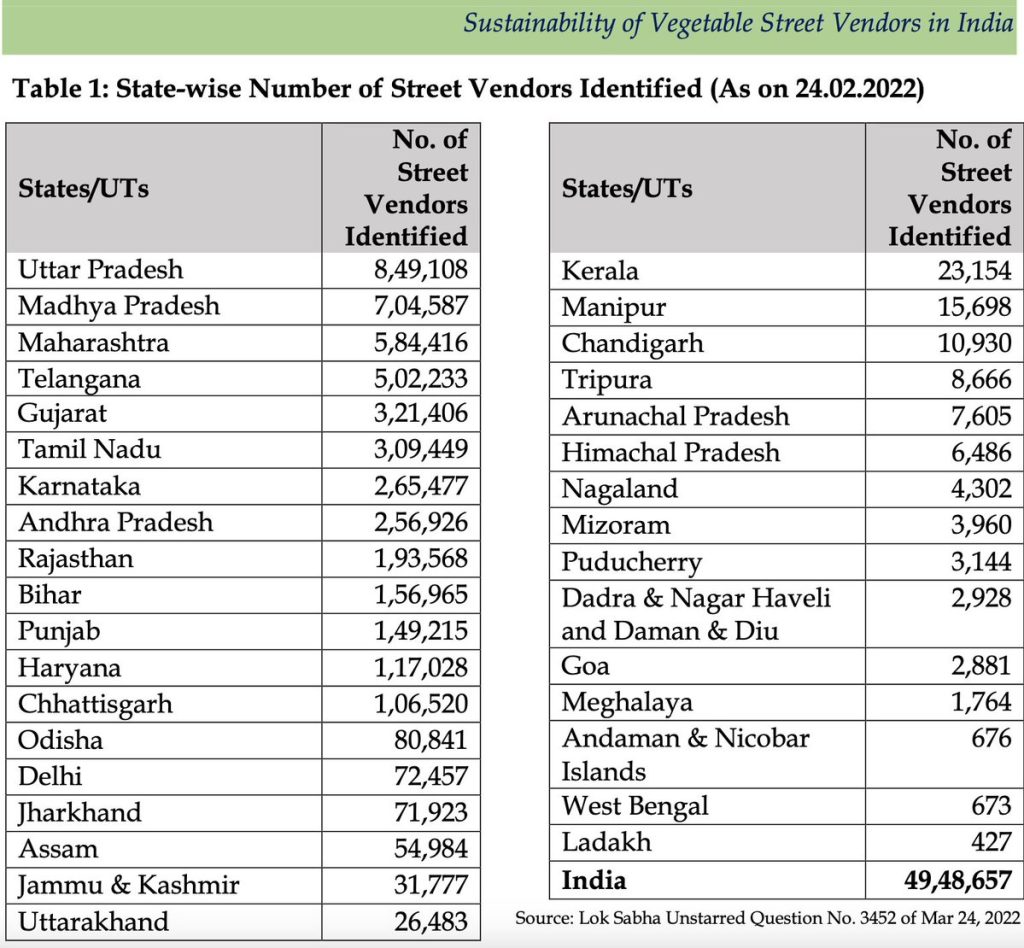
Street Vendor Laws in India
The constitution of India is quite clear on this issue and the Article 19(1)(g) states: It grants all citizens the fundamental right to practice any profession or to carry on any occupation, trade, or business. This right extends to hawkers as well, allowing them to conduct their business in public spaces.
Since the 1990s, stakeholders have worked to formalize street vending, aiming to secure vendors’ rights and ensure their inclusion in urban planning. In 2014, the government finally passed the “The Street Vendors (Protection of Livelihood and Regulation of Street Vending) Act” in this regard.
What does it say?
1. Town Vending Committees need to be constituted by the states in each local authority for identifying street vendors, and issuing vending certificates.
2. Vending zones need to be identified and allotted to vendors.
3. In case of declaration of a specified area as a no-vending zone, the vendors will be relocated to another area(30 days notice).
4. There will be a Town Vending Committee in each zone or ward of the local authority.
While these four points are major highlights of the act, it also covers a few additional aspects.
As you can see, vendors are granted sufficient rights under the law, but state governments and municipalities have failed to effectively implement the measures outlined in the Act.
Here’s data from National Academy of Agricultural Research Management again, which underscores the low count of vending zones in urban areas.
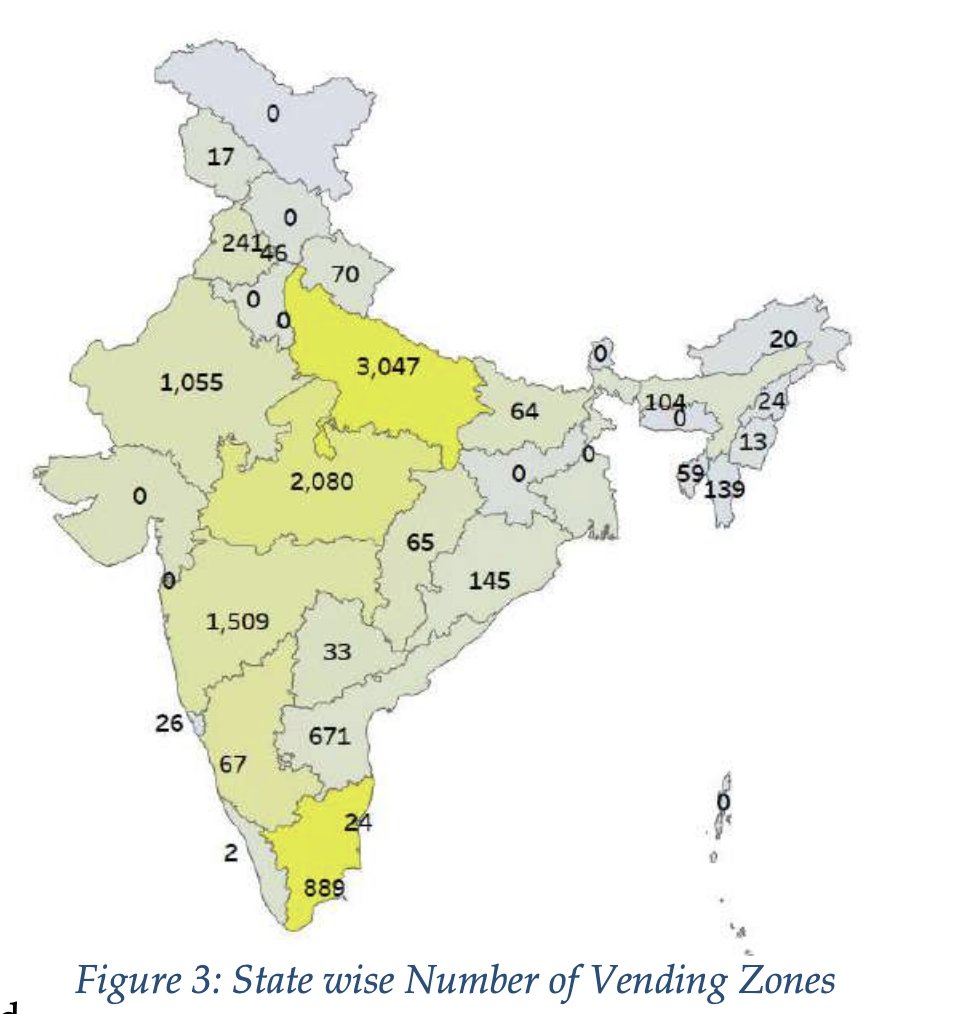
Fight for the rights
Even in cities where there is an established Town Vending Committee, getting a valid license to trade is a huge challenge. Take Mumbai, for example – according to Hindustan Times, the BMC distributed 1.2 lakh forms and received over 99,000 responses, but only 22,000 applicants were deemed eligible. Corruption and forgery are rampant, adding another hurdle for genuine applicants.
Ironically, the BMC is cracking down on street vendors despite street vending being legal. The municipal body, for its part, has yet to implement the Street Vendors Act, 2014. This issue is not unique to Mumbai – cities across the country are grappling with the same set of challenges.
There are other problems like lack of enough representation and influence in Town Vending Committees and having to deal with criminals(with and without uniform) who demand weekly “hafta”(payment) from these vendors.
State governments are also enforcing harsh criminal laws for blocking footpaths and obstructing vehicle movement, despite failing to address vendors’ concerns in a timely manner.
Given this dire situation, footpaths end up becoming the only safe bet for vendors where they can setup a stall, and start selling right away.
However, the problem wouldn’t be as severe if we had wider, functional footpaths – and municipalities and state governments have failed on this front as well.
A well-designed footpath can enhance the experience for both pedestrians and street vendors. In fact, The National Street Vendors Act, makes it mandatory to accommodate vending areas in the street designs.
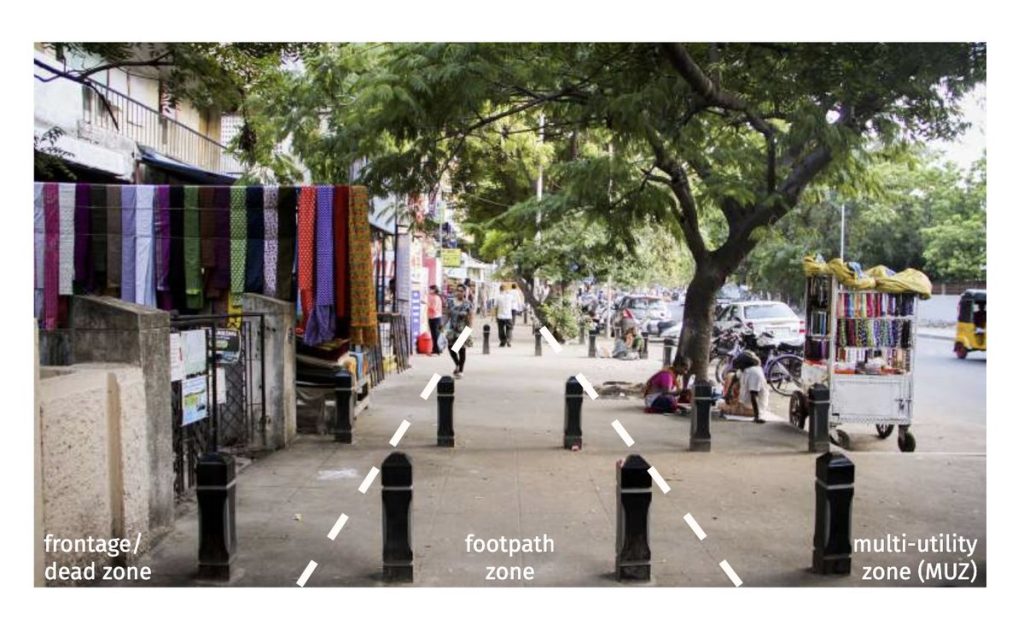
Allocating space for vendors allows sufficient space for pedestrian movement beyond vending areas.
Street vendors increase safety
Here’s a comparison of the same location at two different times – the first image was taken at 7 PM during rush hour, and the second at midnight, after all the street vendors had closed shop or left.
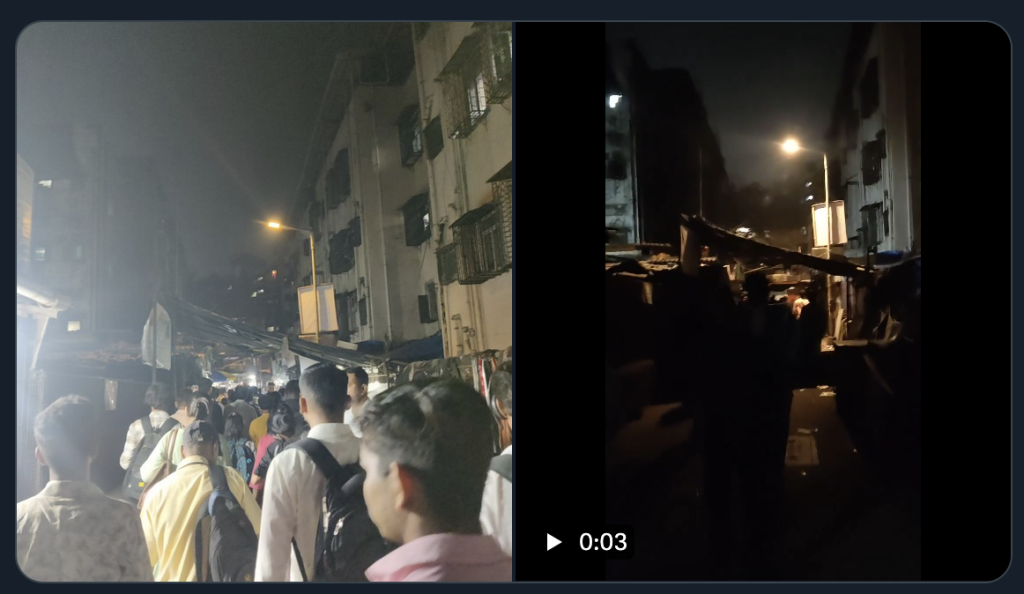
The difference between the two is stark – while the first scene is well-lit and bustling, the second is shrouded in eerie darkness. It creates an atmosphere of fear for anyone trying to pass through, especially for women.
American activist and writer Jane Jacobs introduced the theory of “eyes on the street” in her 1961 book The Death and Life of Great American Cities to highlight how the presence of people in a public space deters crime.
And it’s quite apparent when you think about it – a place surrounded by people feels much safer for everyone, and street vendors help create that sense of safety in a city.
In conclusion
Fix our municipalities.
If our local bodies were empowered, well-funded, and non-corrupt, the conflict between vendors and pedestrians would never arise, because each benefits from the other. This symbiotic relationship is part of our culture and heritage.
Cars and footpaths are relatively recent developments, whereas street vendors have existed for centuries. It’s time the authorities accord them the dignity they rightfully deserve.
As with the rest of us, the next time you see a street vendor selling goods on the footpath, hold your state government and municipality accountable for the issue, not the vendor.
Ask your local authorities why the Street Vendor Act hasn’t been implemented in your city yet.
